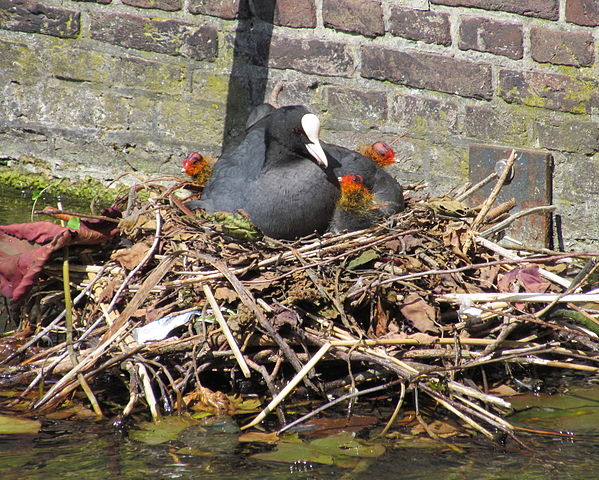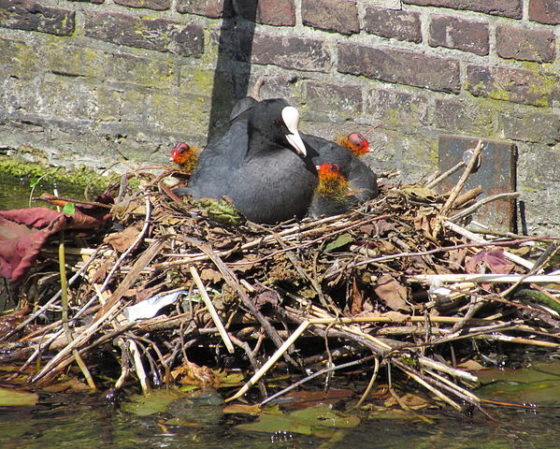Coots are crazy about fake plants for nest material: research


Coots’ nests along Dutch canals are repositories of plastic waste and some of the inhabitants are even partial to artificial floral decorations, researchers from the Naturalis Biodiversity Center have found.
While coots are not the only birds to use waste materials to build their nests, it is the first time the use of plastic plants has been recorded. The components of some 12 coot nests in the canals of Leiden were analysed and three of them contained plastic plants – asparagus fern, carnation and ficus.
‘Fake plants have been designed to look like the real thing. The next thing you know they appear in the coot nests. The one time a city bird finds something natural, it turns out to plastic after all,’ head researcher Auke-Florian Hiemstra told the NRC.
Hiemstra is one of the coordinators of the Platic Spotter project which relies on volunteers to fish out and categorise plastic waste in Leiden. ‘The funny thing is that we very rarely spot fake plastic plants in the canals but coots have no trouble at all,’ he said.
The contents of coots’ nests is another, larger scale project of Hiemstra’s. Thousands of people across the country report what they see in the nests to designated website meerkoetnest.nl.
‘Every year once the breeding season is over I collect a number of those nests,’ Hiemstra said. ‘I put them in the freezer for a bit to get rid of parasites. Then I got them on my table to dissect them and saw some green bits sticking out and thought, how is it possible that plant material has survived?
When Hiemstra found not one but three nests with fake plants he thought it worthwhile to answer scientific journal Behaviour’s call to report observations worth sharing.
‘It’s a sad phenomenon and a fascinating one at the same time,’ he said. ‘Not a lot of plants grow in the canals for coots to make their nest and here they are opting for a material made to look like plants,’
It’s not clear whether the coots know the plants are fakes, Hiemstra said. ‘There are people who have been watering fake plants for years without having a clue. Fake plants are now made to look even more real, with flaws and brown bits. As a biologist the craziness of that world interests me.’
The three fake plants are now part of the Naturalis collection. ‘Not just as a joke but as objects that have a special story to tell,’ he said.
Thank you for donating to DutchNews.nl.
We could not provide the Dutch News service, and keep it free of charge, without the generous support of our readers. Your donations allow us to report on issues you tell us matter, and provide you with a summary of the most important Dutch news each day.
Make a donation